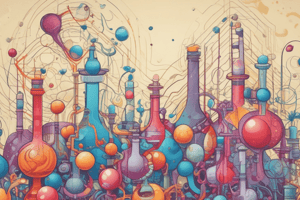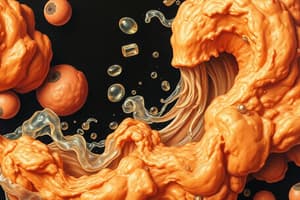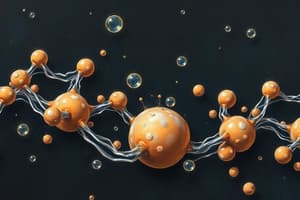Podcast
Questions and Answers
Proteins are composed of the elements carbon, oxygen, and nitrogen only.
Proteins are composed of the elements carbon, oxygen, and nitrogen only.
False (B)
All proteins contain 200 to 300 amino acids.
All proteins contain 200 to 300 amino acids.
False (B)
The quaternary structure of a protein is the result of the interaction of more than one protein molecule.
The quaternary structure of a protein is the result of the interaction of more than one protein molecule.
True (A)
The primary structure of a protein represents the three-dimensional shape of the molecule.
The primary structure of a protein represents the three-dimensional shape of the molecule.
The function of a protein is related to its secondary structure.
The function of a protein is related to its secondary structure.
Protein synthesis occurs at a rate of approximately five to ten peptide bonds per second.
Protein synthesis occurs at a rate of approximately five to ten peptide bonds per second.
Thyroxine is an example of a hormone that assists in controlling protein synthesis.
Thyroxine is an example of a hormone that assists in controlling protein synthesis.
Catabolism requires energy to break down complex molecules into smaller units.
Catabolism requires energy to break down complex molecules into smaller units.
Intracellular proteins are generally synthesized on ribosomes attached to the rough endoplasmic reticulum.
Intracellular proteins are generally synthesized on ribosomes attached to the rough endoplasmic reticulum.
Pregnant women are often in negative nitrogen balance.
Pregnant women are often in negative nitrogen balance.
Flashcards are hidden until you start studying




